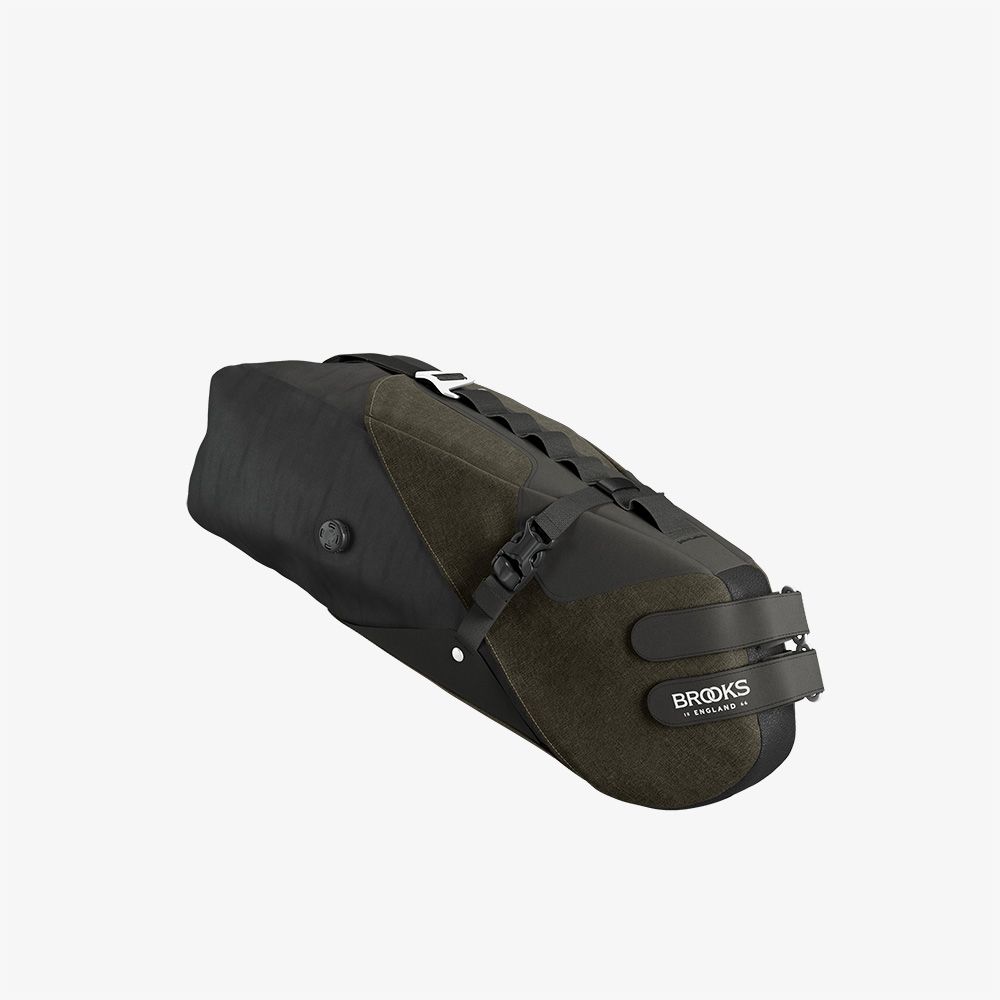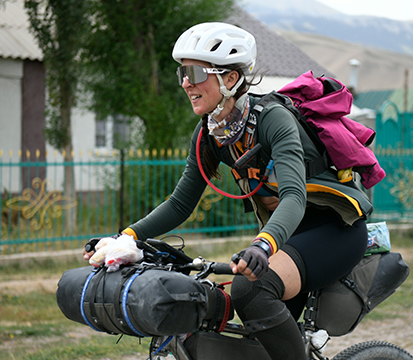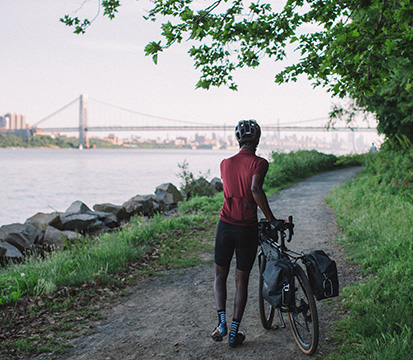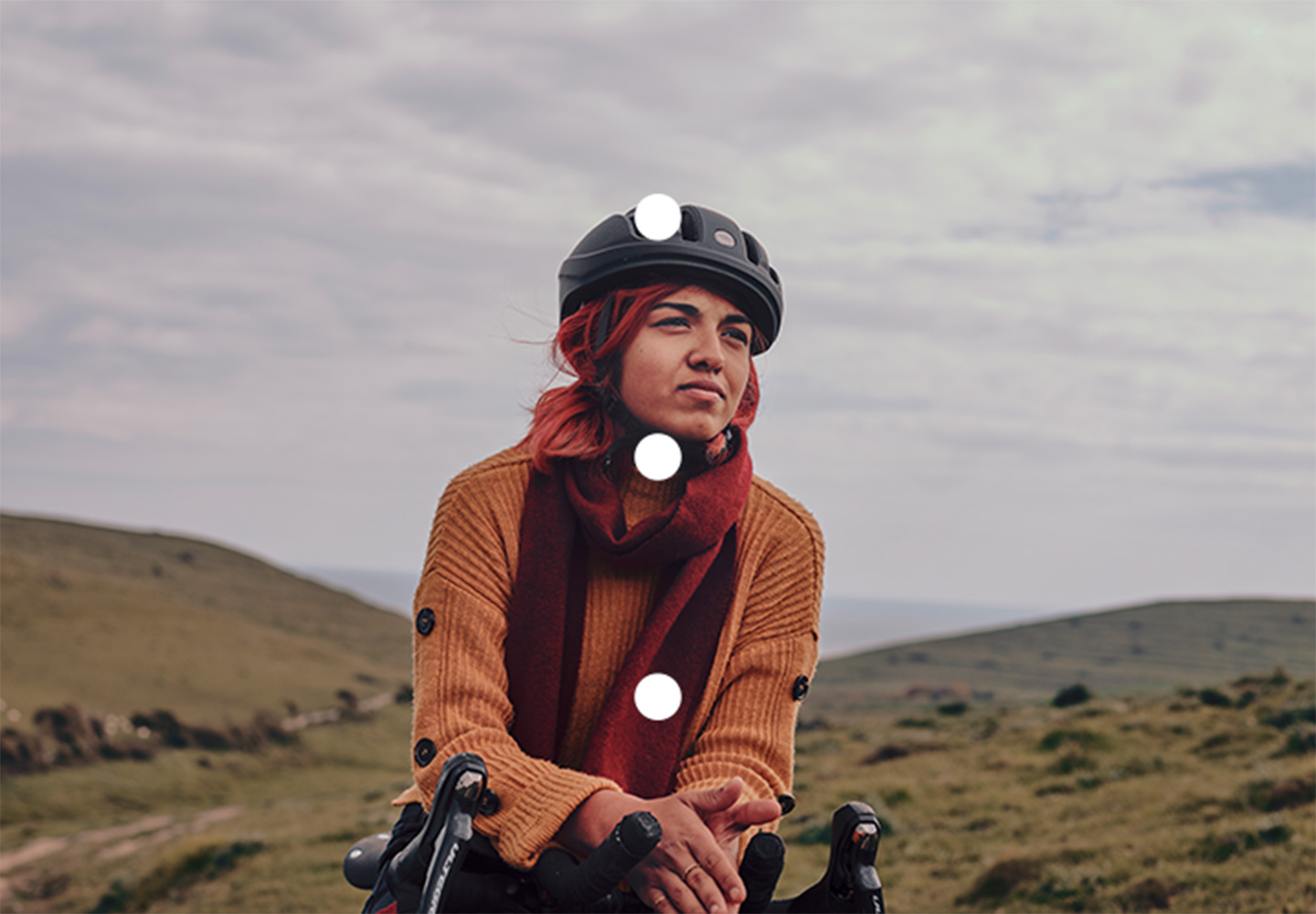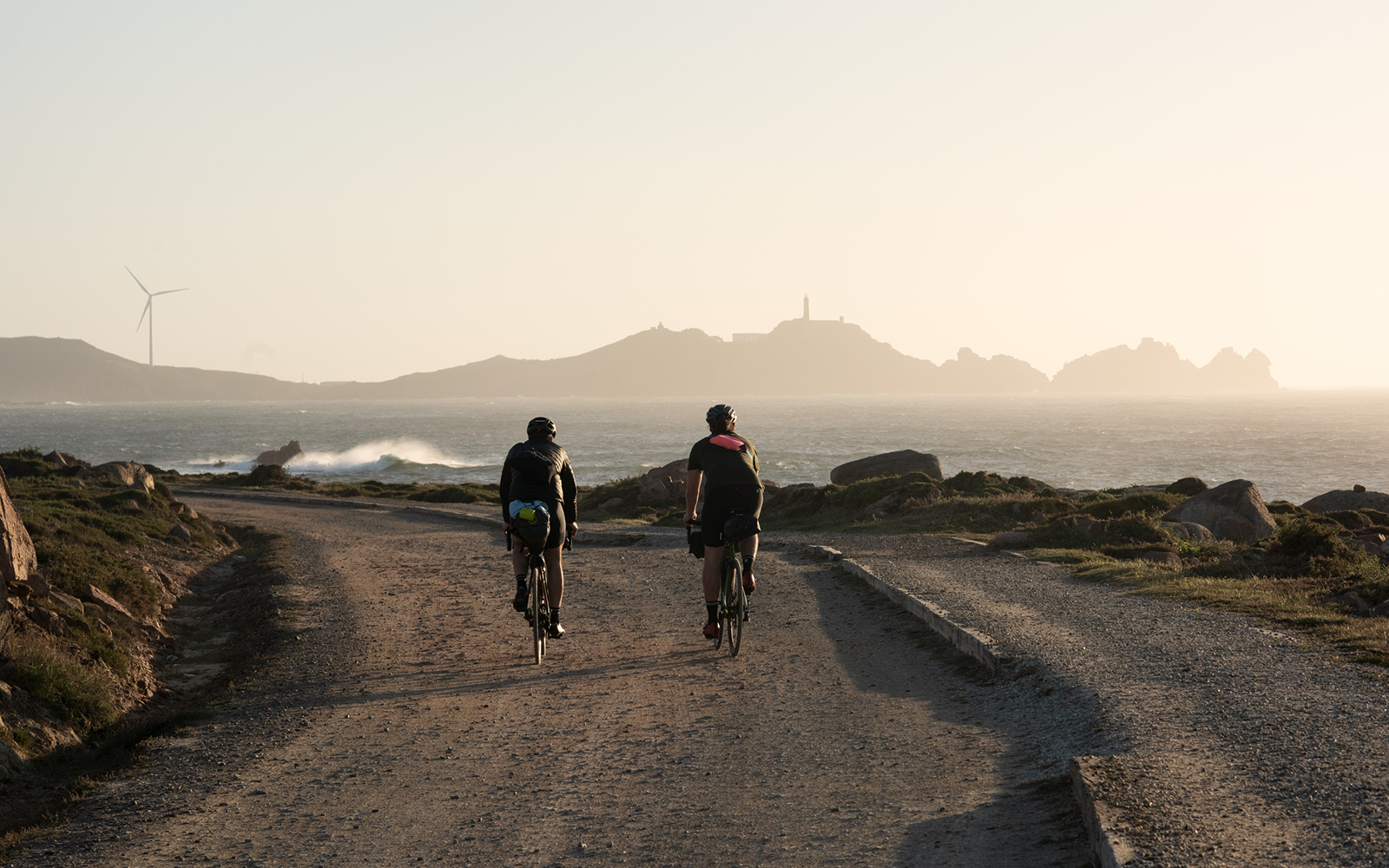
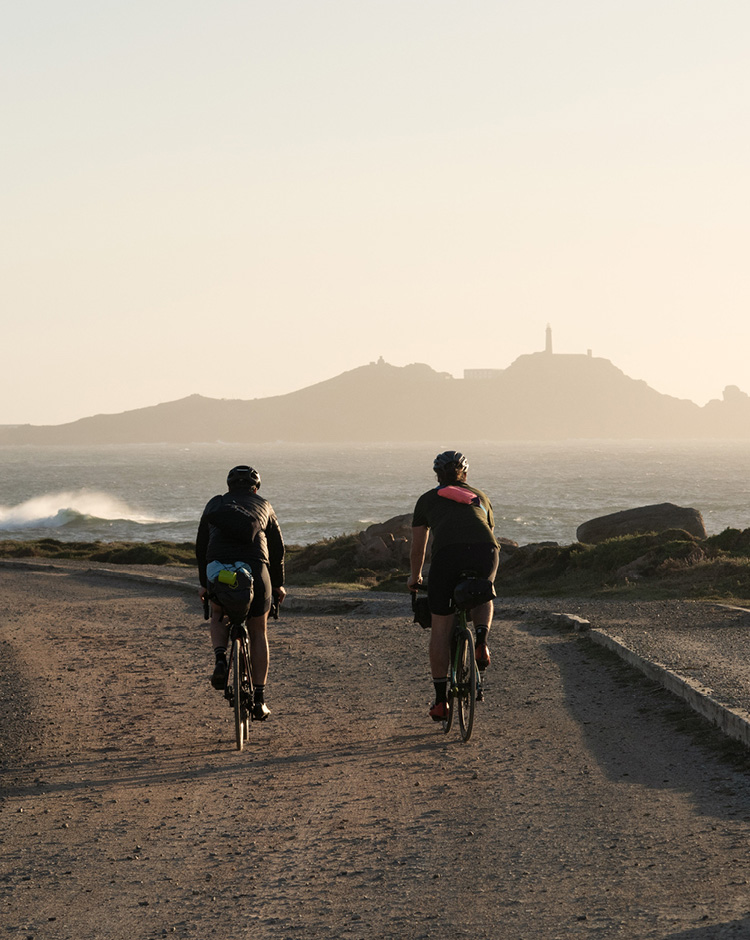
Journeys
To the end of the world
A bikepacking journey between memorials
By Tom Owen & Matt Grayson
From the cosmopolitan streets of central Madrid to the far-flung ‘coast of death’ on Galicia’s northwest shore. This bikepacking journey was inspired by two very different places of memorial.
The first, the Valle de los Caidos (Valley of the Fallen), is a grand and extremely controversial monument built on a hillside near Madrid – it is home to the largest Christian cross in the world, which can be seen from miles away – and was built by the fascist dictator Francisco Franco. The Valley made national and international news in 2019 when the dictator’s remains were exhumed and removed to another cemetery.
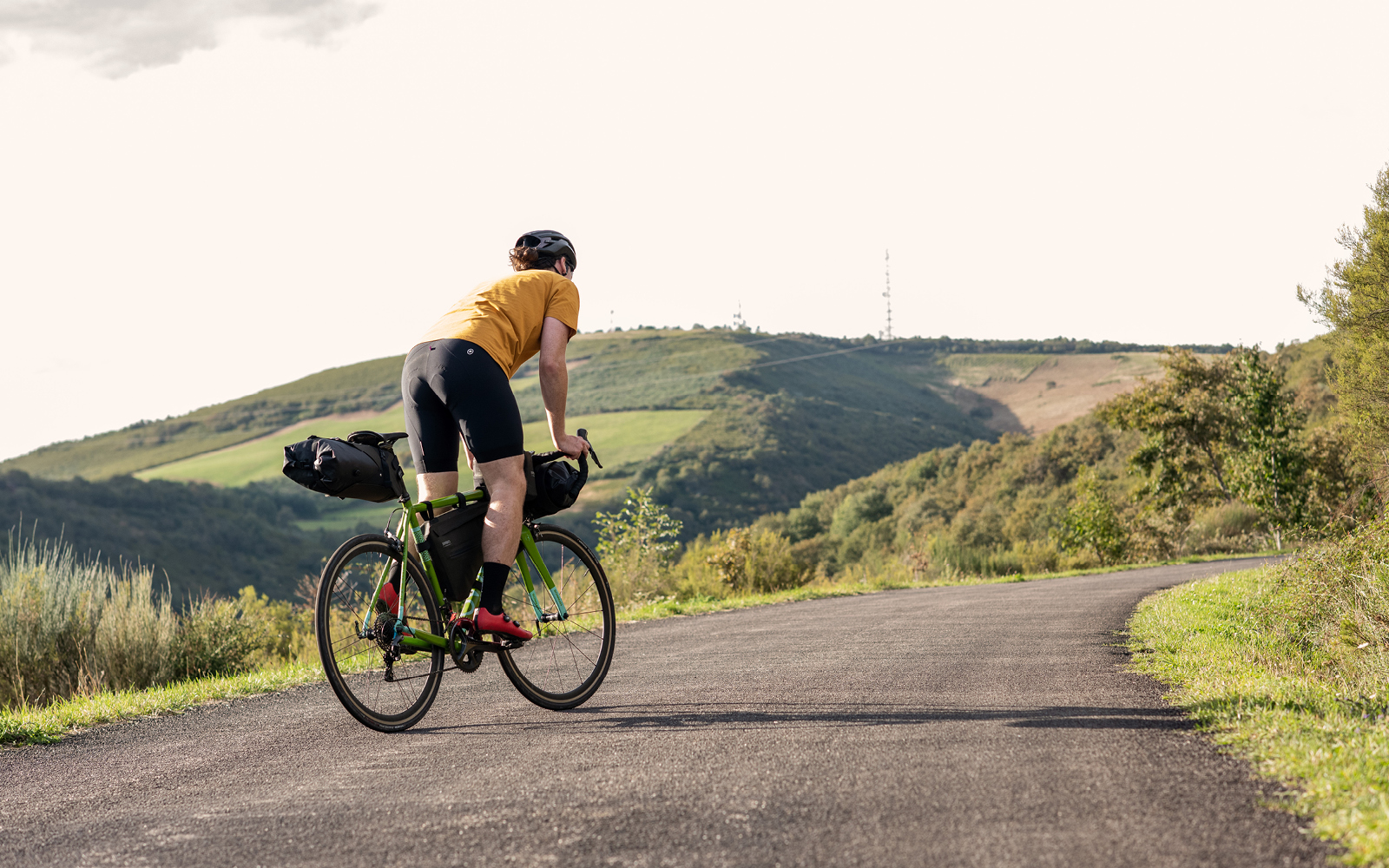
The second memorial, by contrast, is small and unassuming – and it has rarely if ever made the nightly news bulletin. It is a stone-walled quadrant enclosing a plaque commemorating those who died in a shipwreck in 1890 aboard the British navy ship, HMS Serpent. The Serpent was on its way to Sierra Leone, before sinking off the coast of Galicia. The coast is infamous for naval accidents, hence its nickname, the Coast of Death. In earlier times, it was also thought of as ‘the end of the world’, with Cabo Fisterra – derived from the Latin fin terra or ‘world’s end‘ – still bearing the Roman legacy to this day.
We set out to ride between these two places as an opportunity to reflect on their differing significances.
The bikepacking route is – broadly speaking – on-road, but there are enough surprise sections of gravel to keep the mind stimulated and put one’s tyres to the test. At many points along the journey, the route crisscrosses the various routes of the Camino de Santiago – and on more than one occasion the unwary cyclist may find themselves on said camino route, rather than a piece of asphalt road.
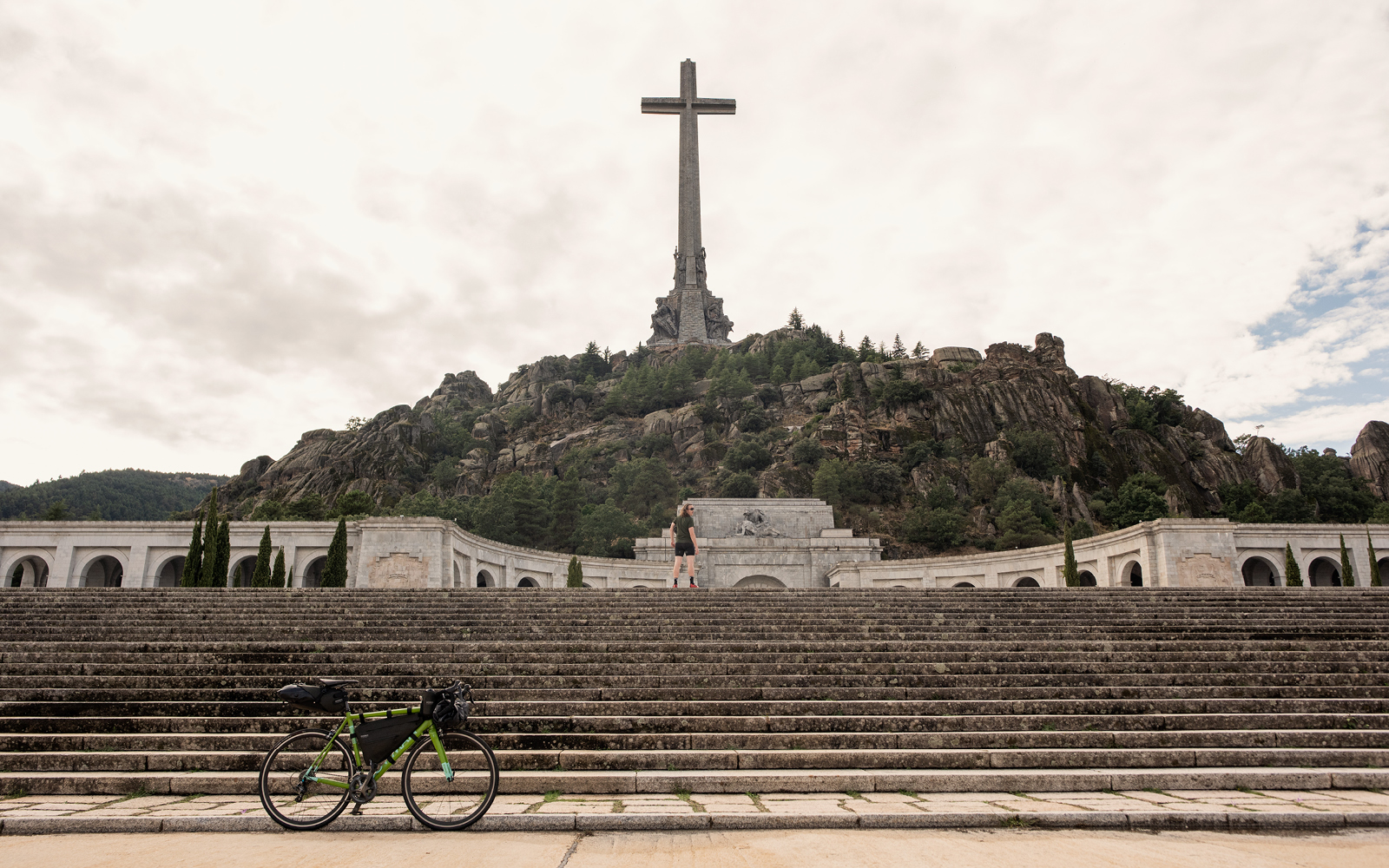
Our first stop, not far from Madrid, is the Valley of the Fallen. It is a sombre and imposing place, nestled high in the Sierra Guadarrama. One gets a sense of the great struggle endured by those who built it, many of whom were political prisoners – members of the beaten Republican forces who had opposed Franco in the civil war. Franco may no longer be buried here, but the place retains a haunting aspect. It is a beautiful place, and without the Francoist overtones, would surely be one of Spain’s most important monuments. Instead, as it is now in the present, it is difficult to like the place; its beauty underscored by its own grim history.
From the mountains outside Madrid, the next and longest part of the ride is brutally tough – a long, 300-kilometre stretch where altitude is being lost all the time, but an extreme headwind thunders down from the north-west across the windswept plains. If you get lucky and find the wind at your back, rather than straight down your throat, you could easily ride 150km a day without ever feeling like you had pushed upon the pedals. Instead, it’s a battle to keep going, for two straight days.
This plain in northwest Castile & Leon must be one of the places in Europe with the highest concentration of wind turbines. There are moments in the darkening dusk when all you can see against the horizon are these tri-pointed monoliths and the power lines that ferry their product to the people of Spain. It is a dystopian vision, a flash of what much more of our world might yet become if we continue on the same disastrous ecological path.
After the Castilian plains, come the foothills of the Montes de Leon, a subgroup of the Cantabrian range – and it’s here where the sight of pilgrims on their own journey becomes more and more frequent. It’s inspiring to see them as you glide by in the saddle, these dedicated, devoted walkers trudging ever-onwards. On our streamlined loaded bikes, we’ll go as far before breakfast as some ‘peregrinos’ might make it in an entire day – and while we started just a couple of days before, they have been travelling for much, much longer than that.
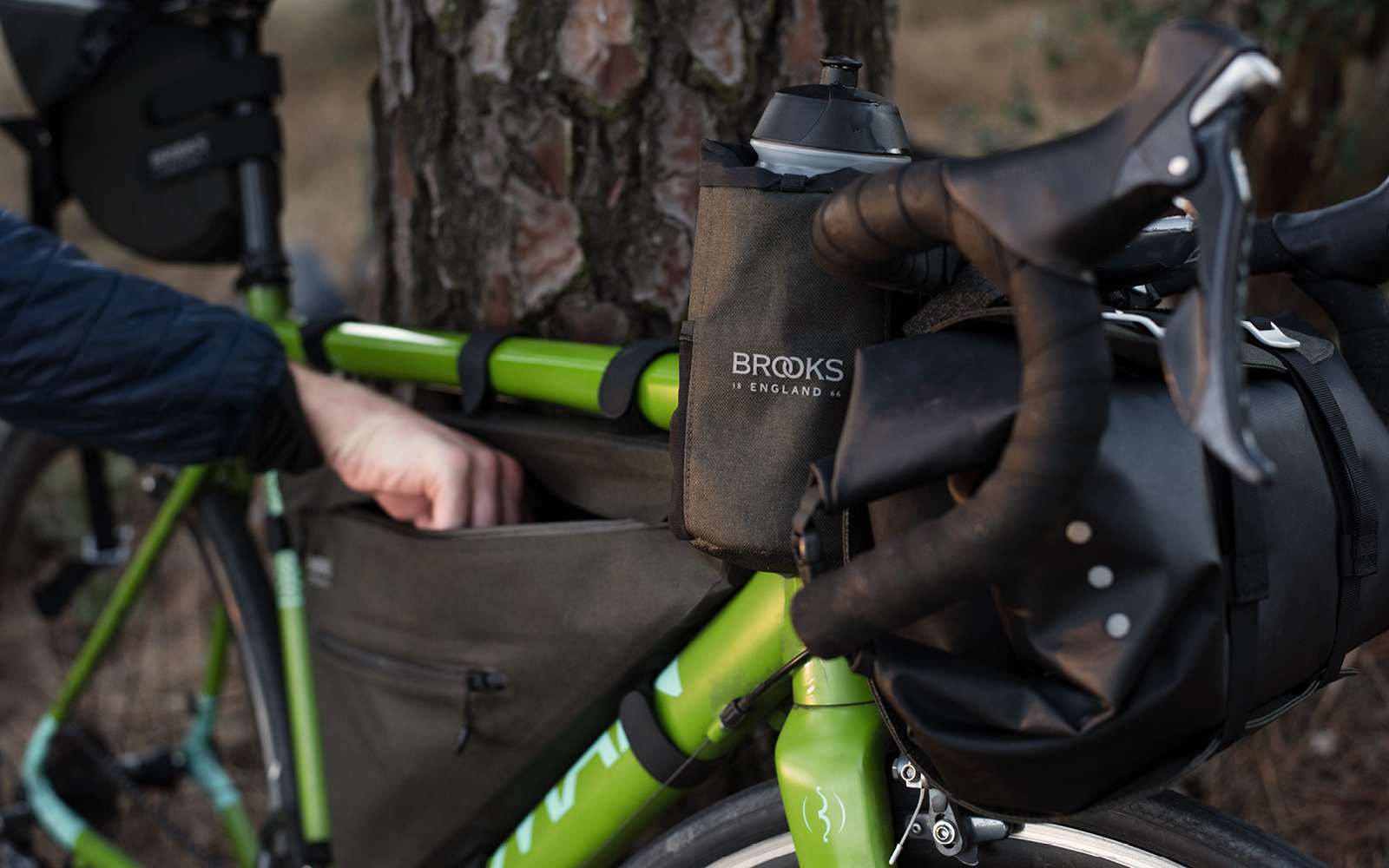
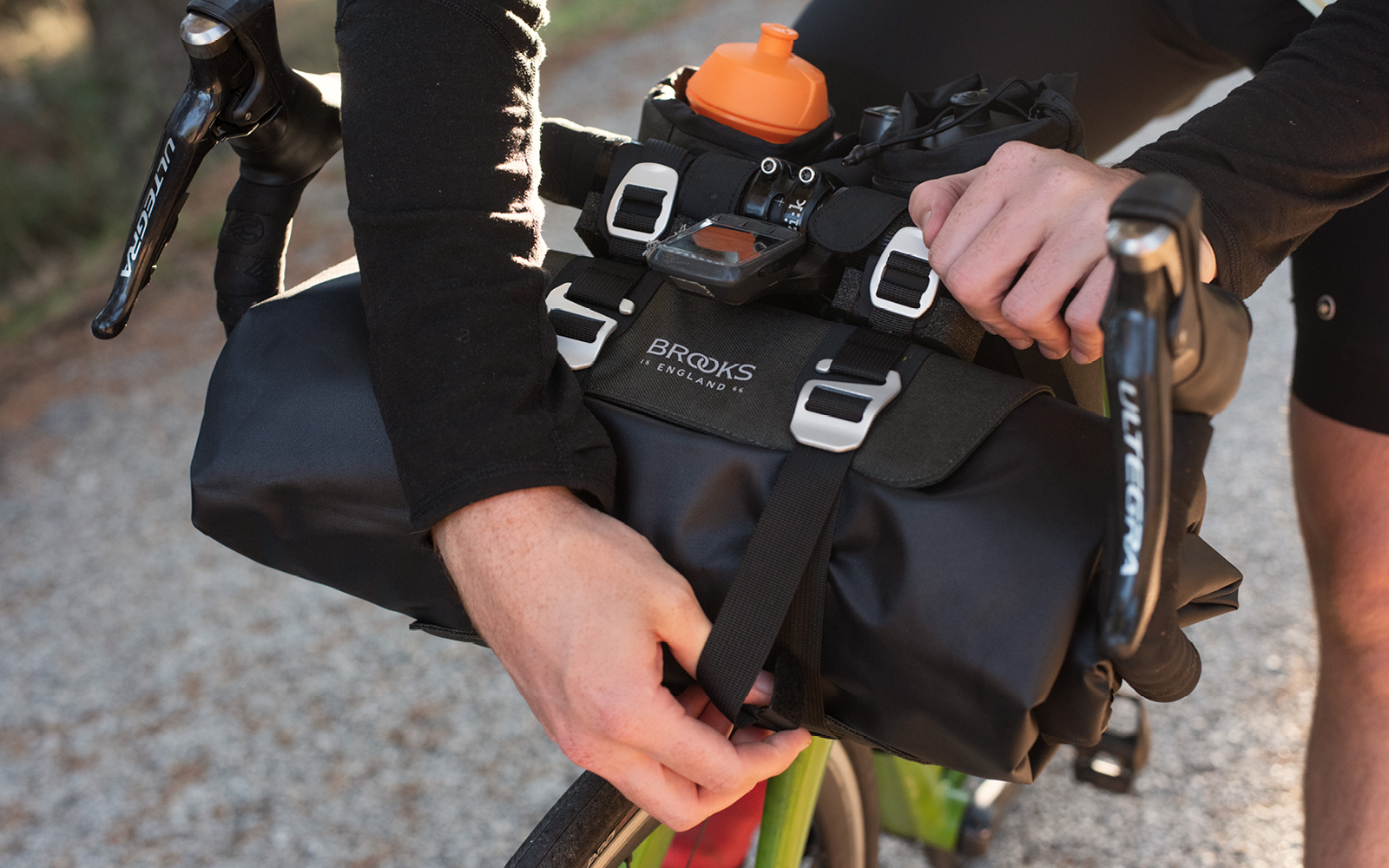
Whether you walk or you ride, this is a wondrous environment to move through, a sumptuous landscape to be surrounded by. The scorched reds and browns give way to shades infinitely more verdant. The greenness of what is often dubbed ‘green Spain’, could rival the leafiest parts of Great Britain, the densest forests of Alaska or Maine.
If the first part of this 800-kilometre adventure is broadly speaking ‘downhill’ the middle section is all about selecting a small gear and winching your way up precipitous Galician walls. There is a highway that winds its way along the valleys between these hills, and next to it a secondary road (which used to fulfil the same role that the modern highway does now). It’s perfectly legal to use this secondary road as a cyclist, but where would the fun be in chugging along with the lorries and the cars when you could throw yourself into the wild loveliness of the mountains? And yes, there are moments – as the cleat slips out when you’re trying to get going again after a breather on some cruel stretch of 11% – when you wish you’d taken the easier road, but the summits make it worth it.
Whether you’re being held up along your way by small clusters of Galician blond cows on their way home for the night or marvelling at the long-abandoned architecture of coal plants or pre-Franco health spas, this region of Spain is an endless surprise. The biggest surprise of all comes in the very final moments.
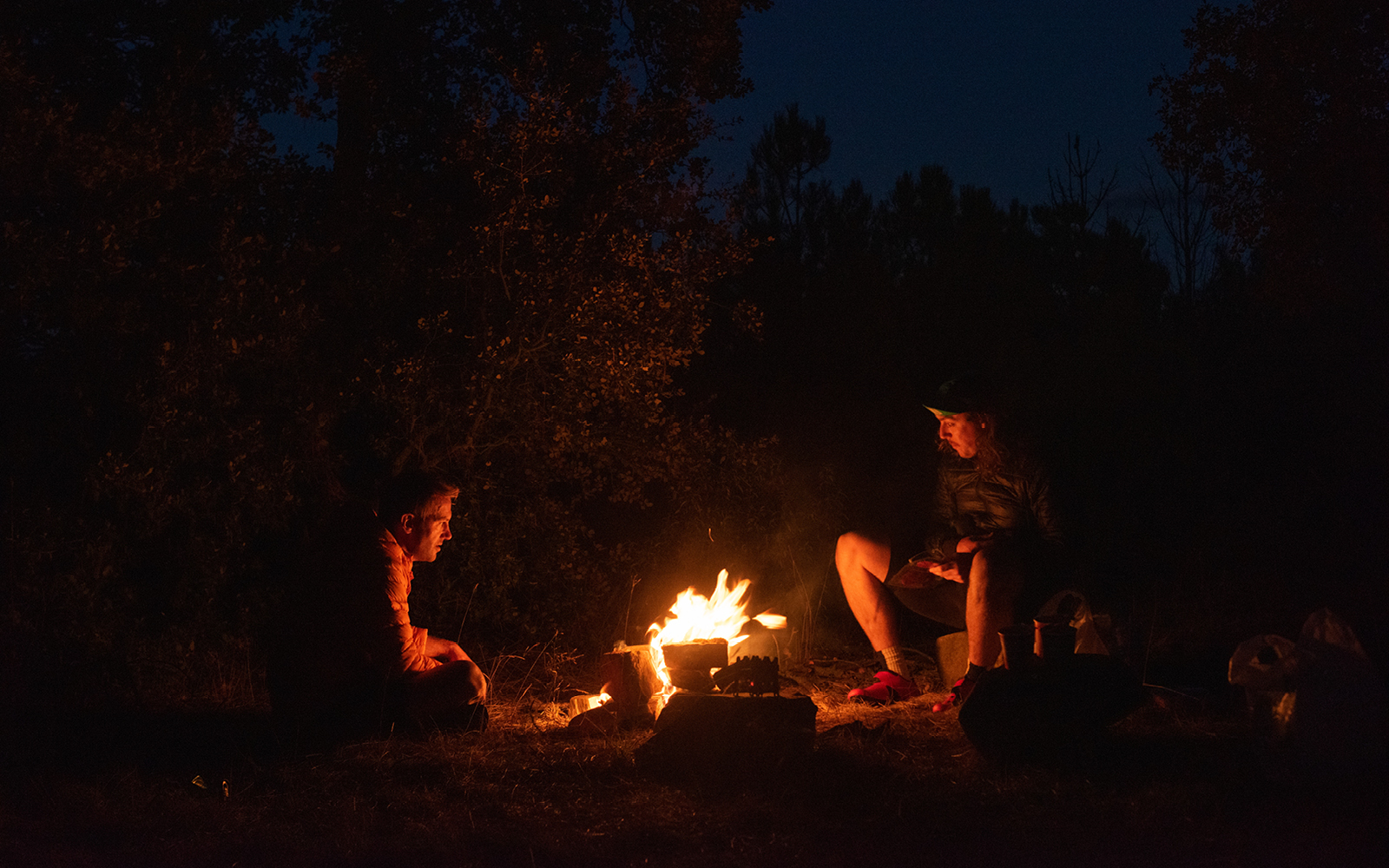
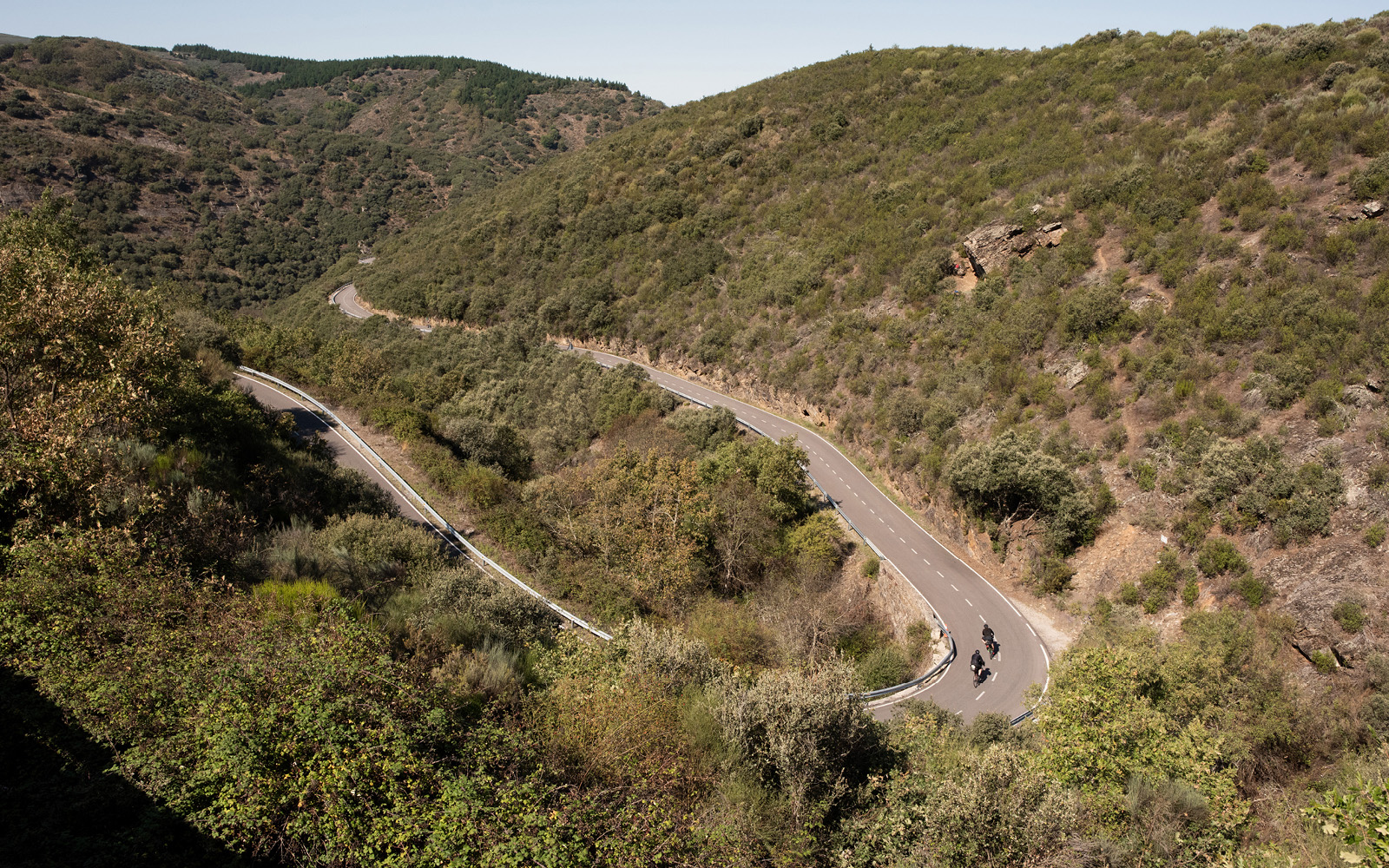
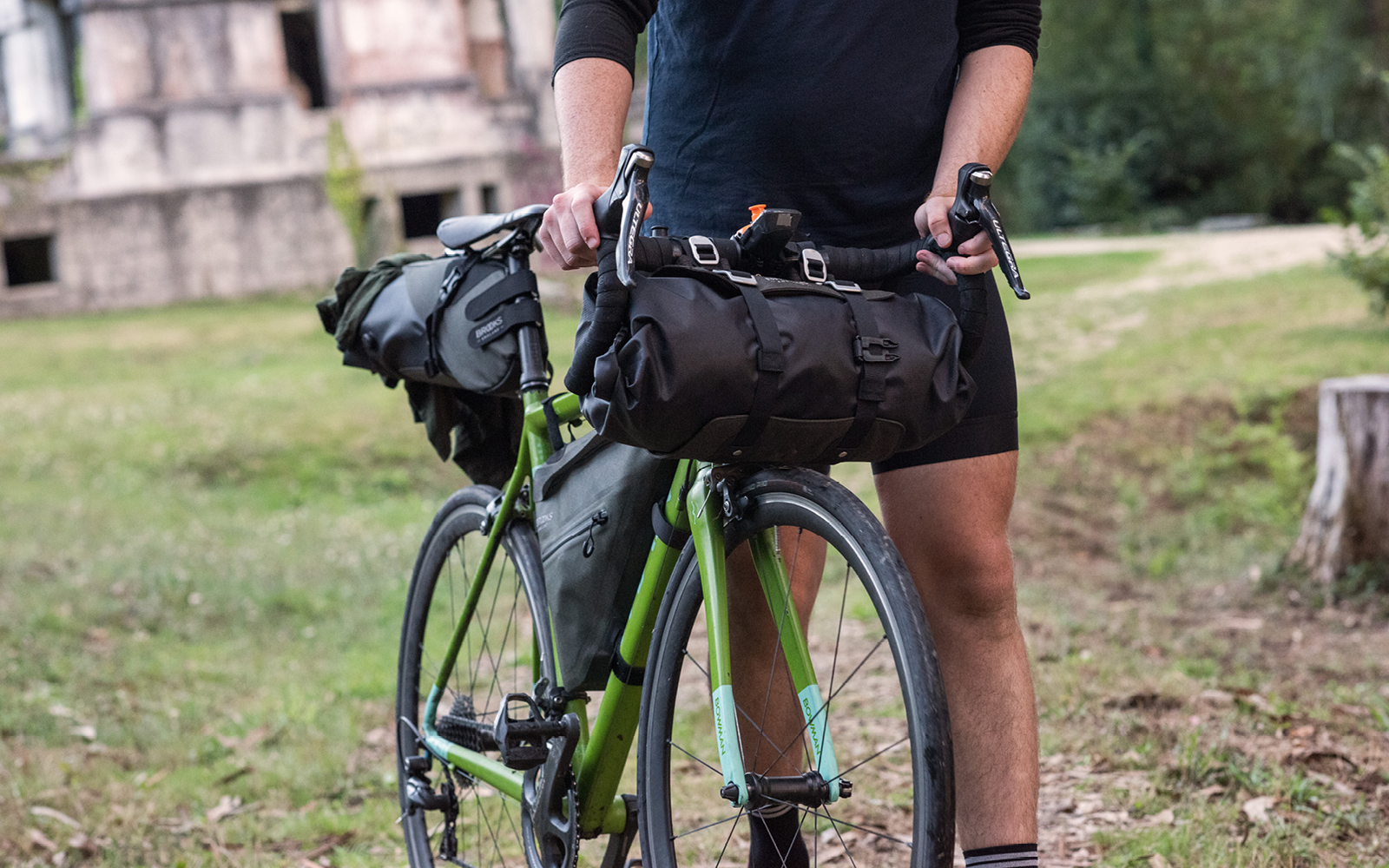
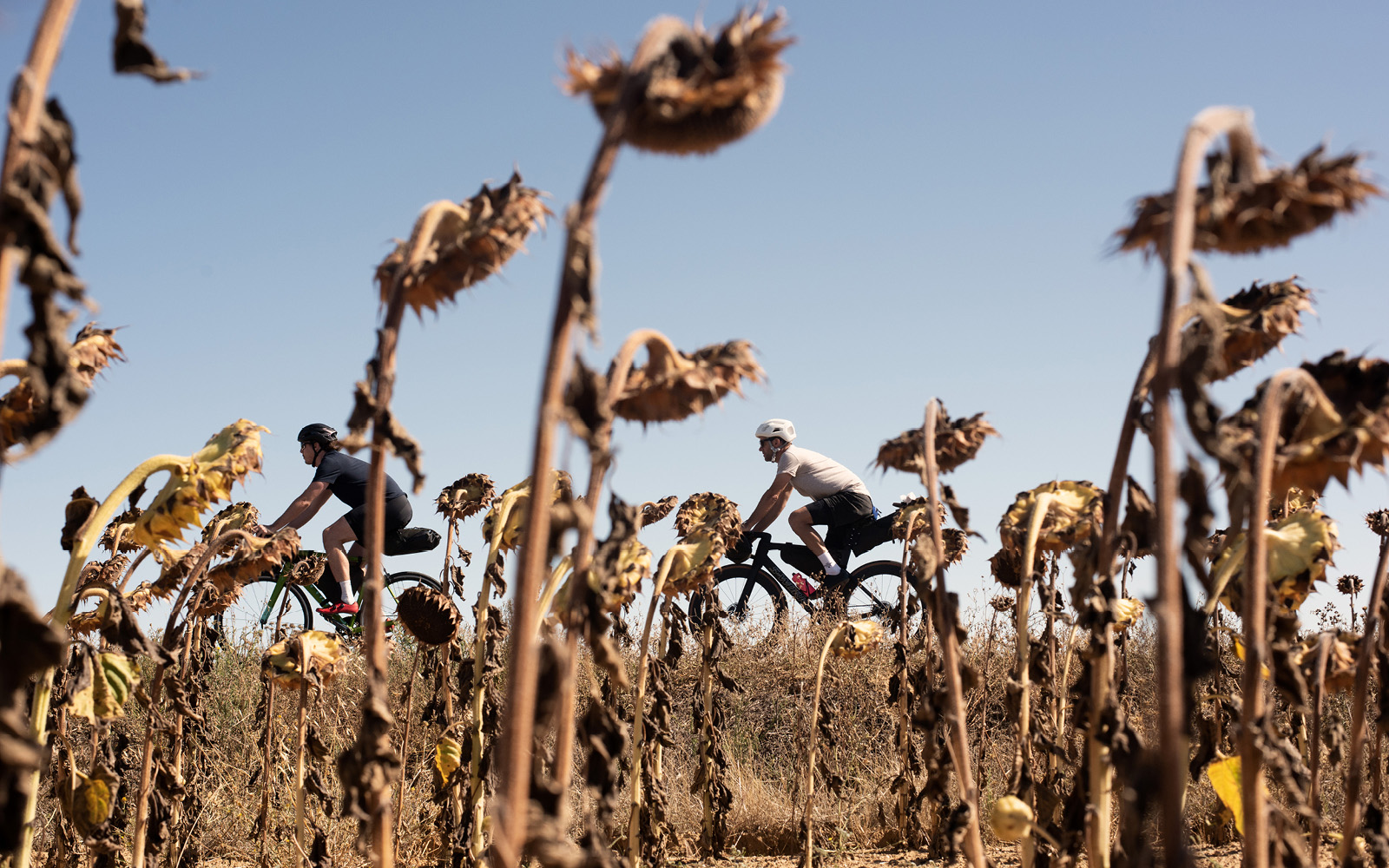
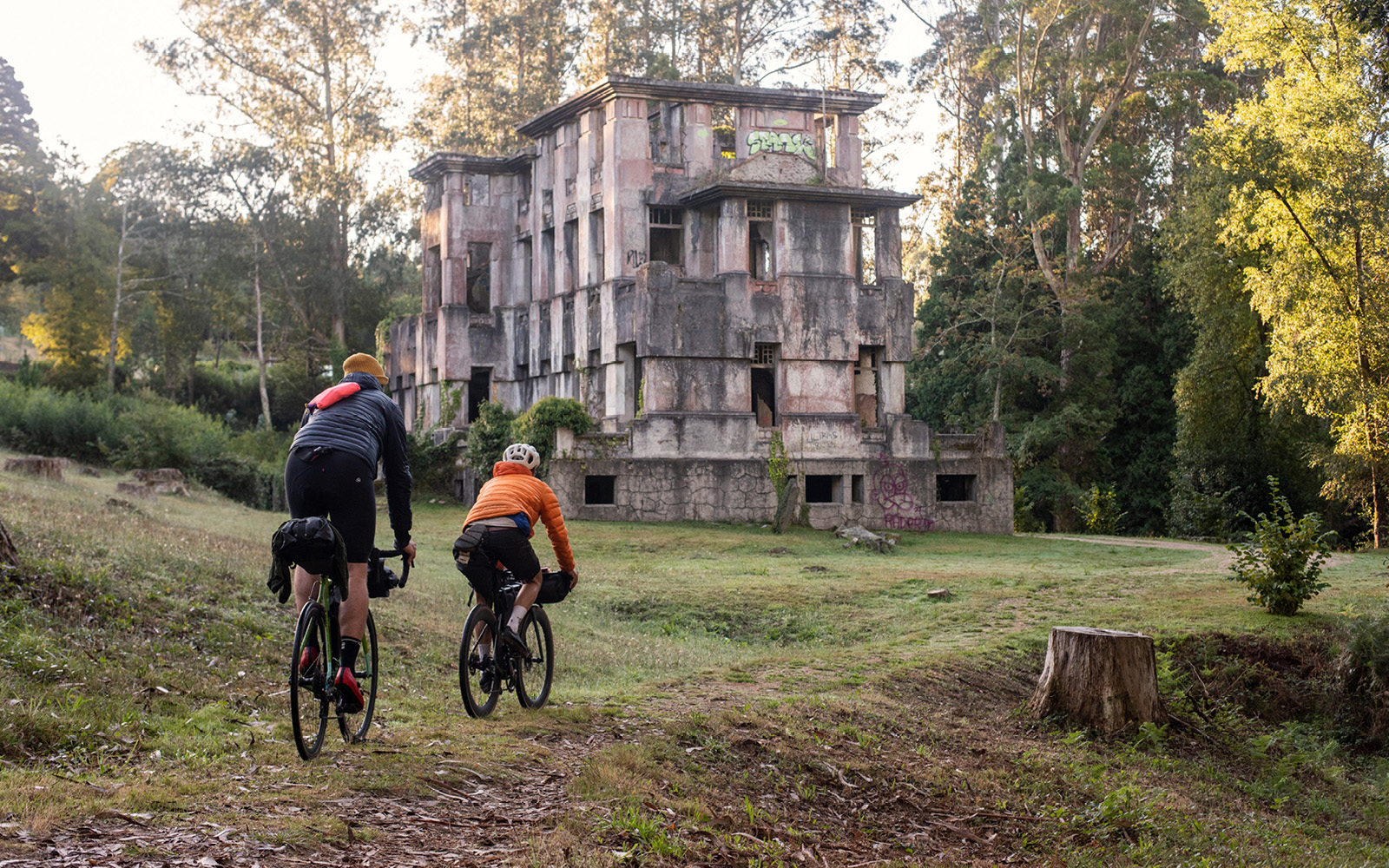
This is a ride that ends at the sea, but while the final day’s route never takes you further than 20km from the Atlantic as the crow flies, you still do not glimpse its dark blue waters very often. In fact, everything about the terrain feels as though you are moving through the middle of a landmass, not like you are near its edge at all. One last steep climb takes you north from the small village of Xaviña towards the cemetery, and it is here where Mother Nature makes her big reveal.
The climb crests and you can already hear the roar of the sea against the granite shore, but it takes a few more pedal strokes before you see it – the deep octane blue. The coastline opens up, emerging out of the trees that line the road, as if from behind a pair of green theatrical curtains being pulled back. The sight is awesome, in the original sense of the word. It fills your body up with amazement. It bolts you to the spot, forcing you to unclip and just drink it in.
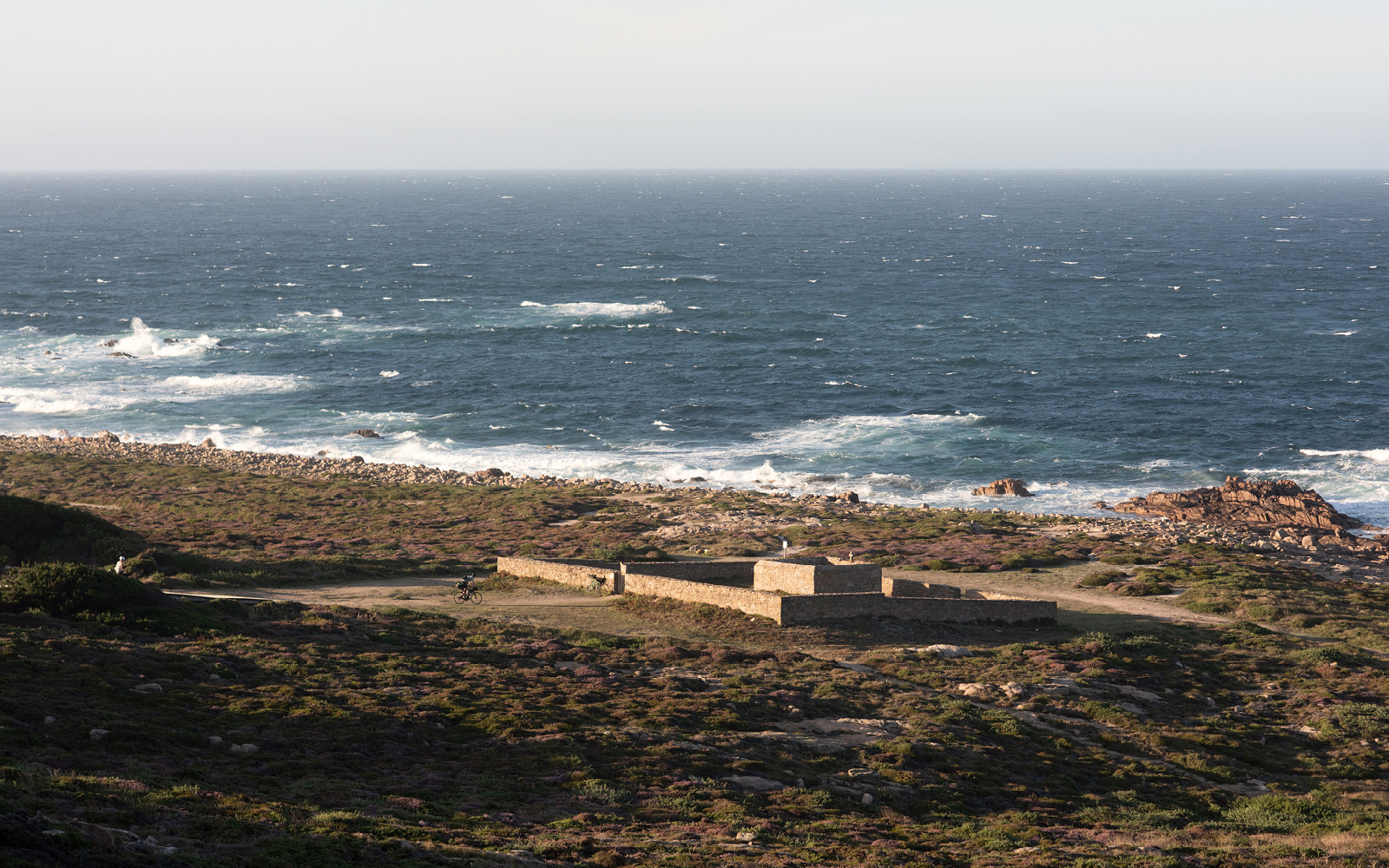
A final gravel descent takes you to the cemetery itself. A tiny little construction that stands in defiance of the raging Atlantic; that same wild ocean that pulled 175 of the 178 crew aboard the HMS Serpent to their deaths. Nobody made the Galician people build this cemetery here. They did it out of humanitarian spirit, fellow feeling for the lost souls aboard the Serpent. Everyone who comes here and knows the story behind it must surely have some sort of emotional reaction. This impossible, almost-forgotten place, that stands as a testament to the essential goodness of humankind.
Photography by Matt Grayson
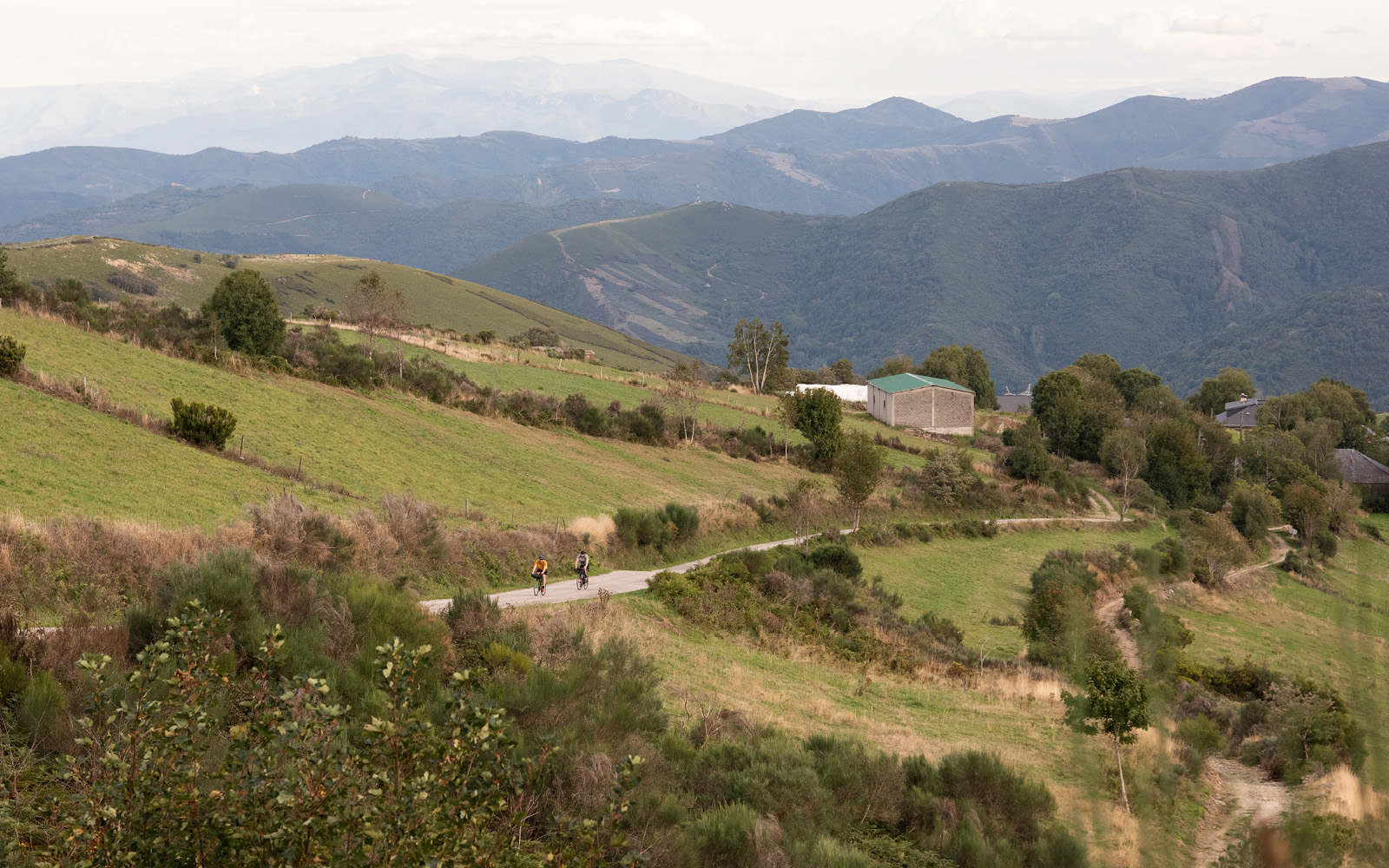
Spanish Bikepacking Essentials
More Journeys Stories
The land of powerful mixtures
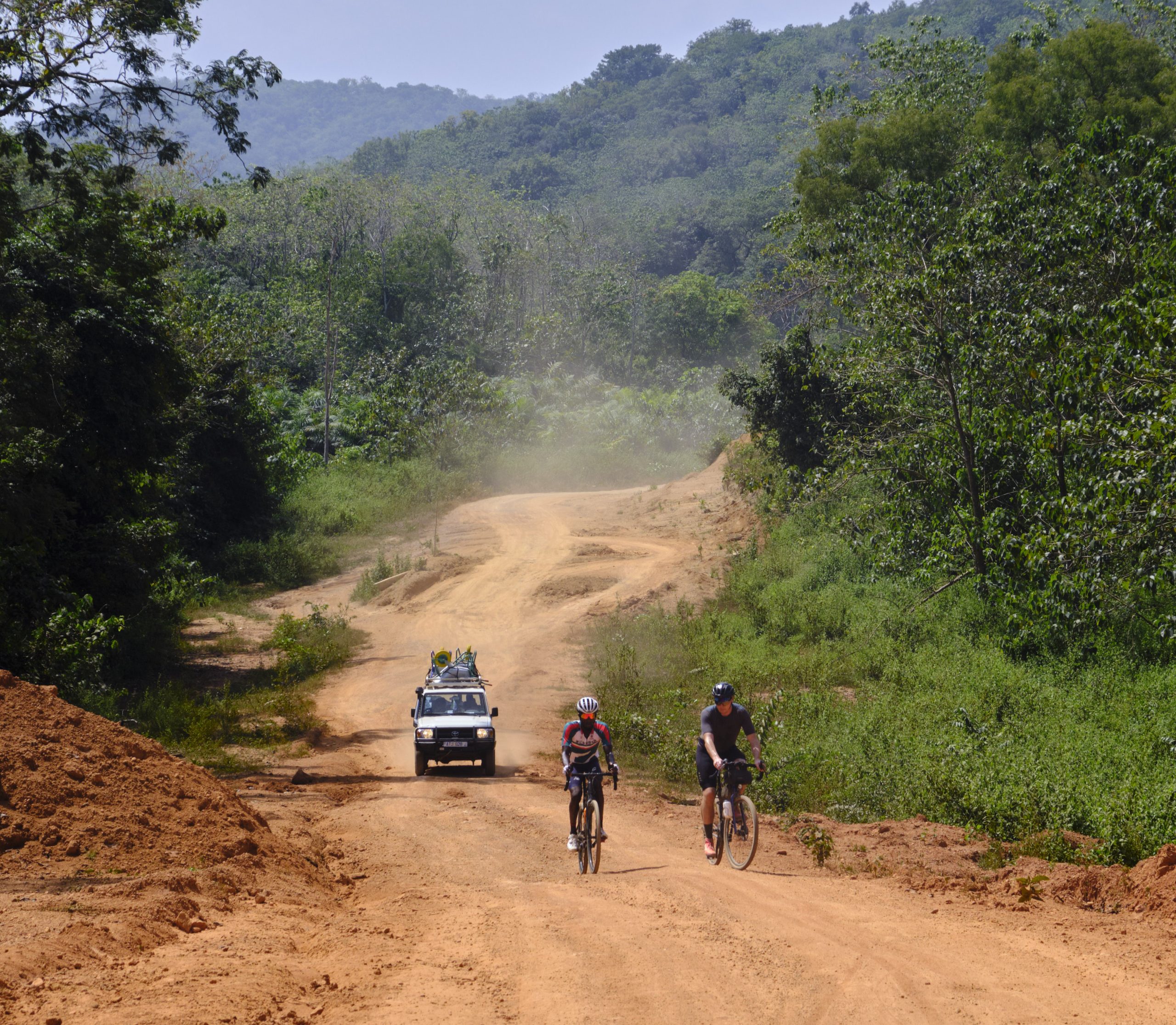
West Africa’s untapped wonderland – discovering Sierra Leone gravel
READ MORE




